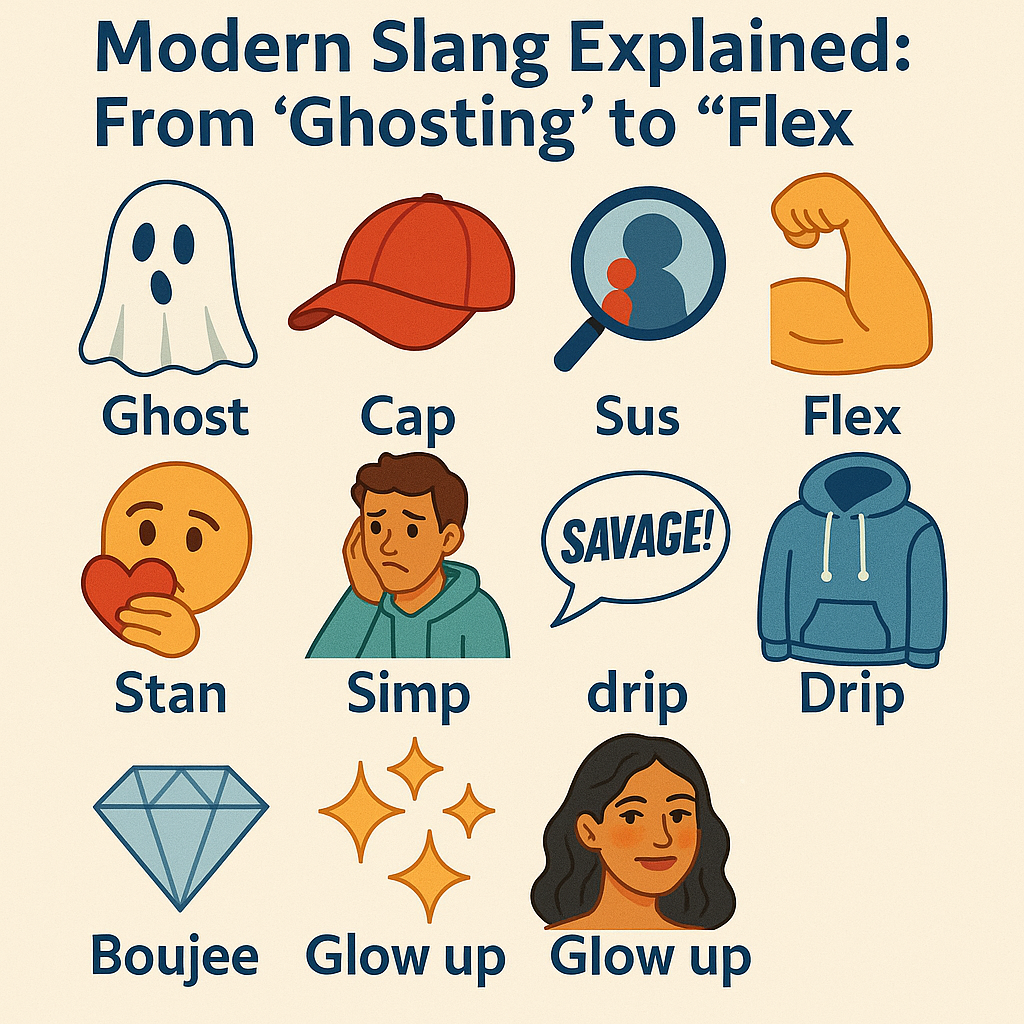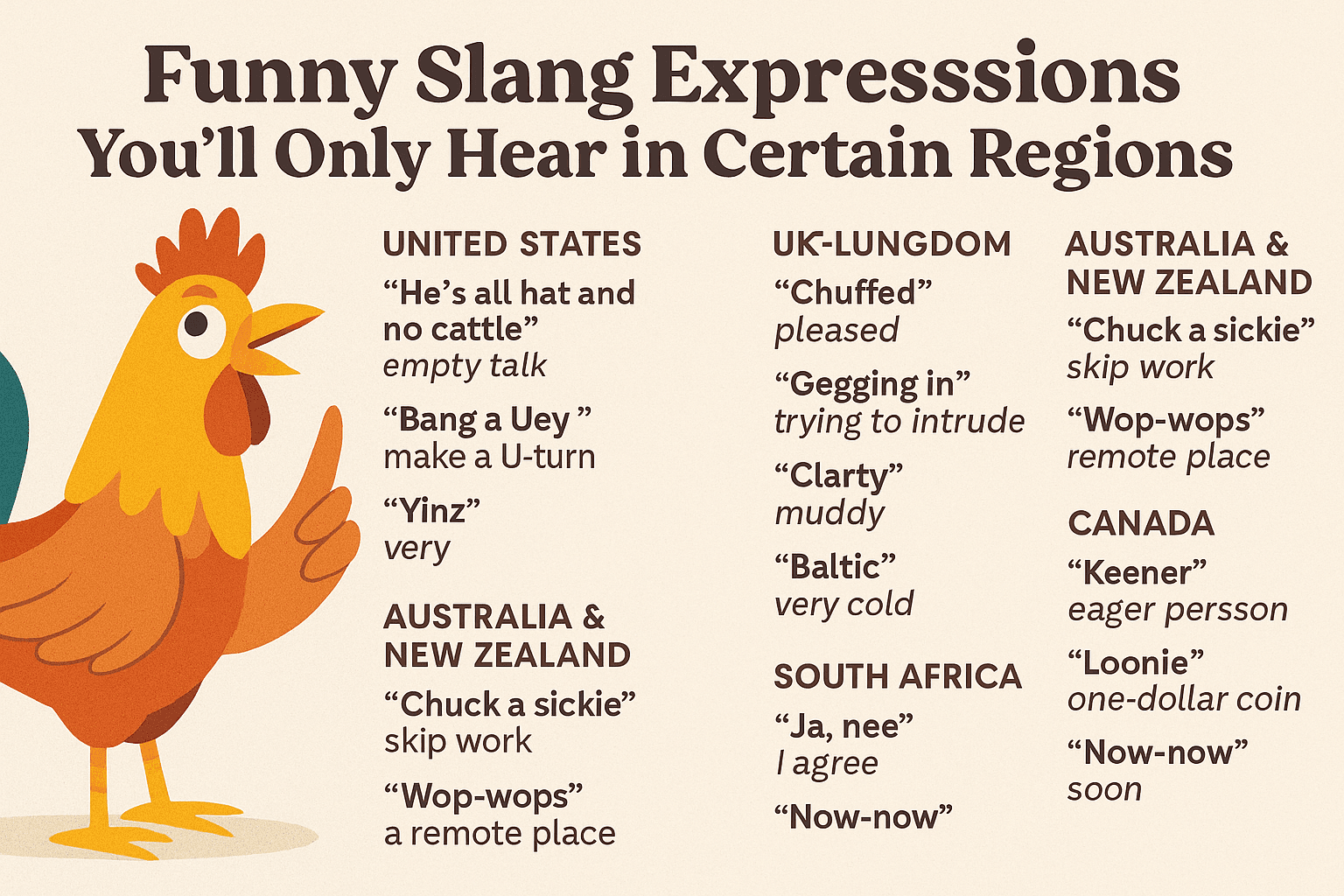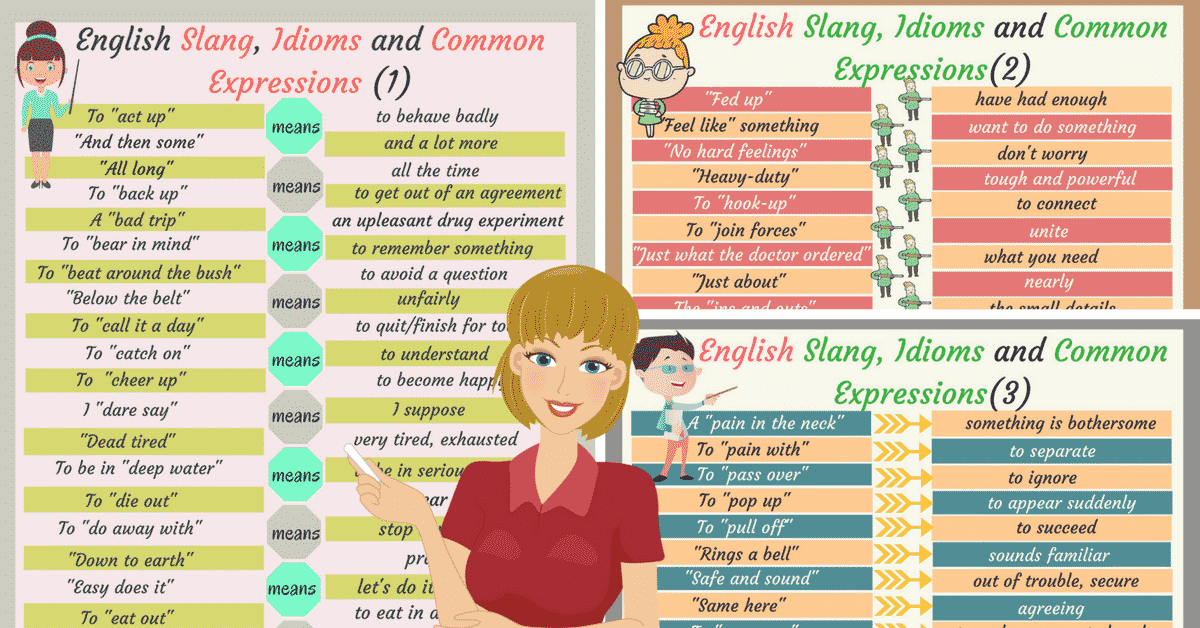Language is always evolving, and nowhere is that more obvious than in modern slang. Thanks to the internet, social media, and pop culture, today’s slang changes faster than ever—and it’s full of expressive, witty, and sometimes bizarre phrases.
If you’ve ever felt lost when someone said they got “ghosted” or that someone’s “flex” was cringe, don’t worry—we’ve got you covered.
In this guide, we’ll explain the meaning behind some of the most popular modern slang terms, where they come from, how to use them, and when to avoid them.
What Is Modern Slang?
Modern slang is informal language that:
- Emerges from online culture, music, or youth trends
- Is usually short-lived or constantly evolving
- Often reflects social dynamics, identity, or humor
Unlike traditional slang that might last decades (like “cool”), modern slang often explodes on TikTok, Twitter, or meme culture and becomes part of daily speech—especially among Gen Z.
🔗 Explore slang meanings on Merriam-Webster’s Slang Dictionary
1. Ghosting
- Meaning: Suddenly cutting off communication with someone (usually after dating or chatting online).
- Origin: Popularized through online dating culture.
- Example: “We were texting every day, then he ghosted me.”
👉 Related article: Psychology Today – What Ghosting Says About Someone
2. Flex
- Meaning: To show off (usually in a way that seems intentional or excessive).
- Origin: Hip-hop culture; originally referred to flexing muscles.
- Example: “Posting a Lamborghini on Instagram is a weird flex.”
“Weird flex, but okay” is a sarcastic meme response that went viral online in 2018.
3. Cap / No Cap
- Meaning: Cap = lie; No cap = telling the truth
- Origin: African American Vernacular English (AAVE), popularized by rap culture
- Example: “That story is all cap.” / “I swear, no cap.”
🔗 Learn more slang rooted in AAVE from Linguistic Society of America
4. Sus
- Meaning: Suspicious or shady behavior
- Origin: Short for “suspicious”; exploded in popularity during the game Among Us
- Example: “Why did she leave so fast? That’s sus.”
5. Stan
- Meaning: A super fan or obsessive supporter
- Origin: From Eminem’s 2000 song “Stan” about an overzealous fan
- Example: “I stan Beyoncé.”
It can be both positive (enthusiastic fan) or negative (too obsessed).
6. Simp
- Meaning: Someone who does too much for someone they like (often one-sided)
- Origin: Started as insult toward men perceived as overly submissive in dating
- Example: “He bought her a car after one date—total simp move.”
⚠️ Often used in toxic or mocking ways—be cautious.
7. Savage
- Meaning: Bold, blunt, or ruthlessly honest
- Origin: Mainstreamed through memes and songs like Megan Thee Stallion’s “Savage”
- Example: “She called him out in front of the whole class—savage!”
8. Drip
- Meaning: Stylish clothing or fashion sense
- Origin: Rap and streetwear culture
- Example: “Check out his drip—those shoes are fire.”
“Fire” is also slang for something impressive or attractive.
9. Boujee
- Meaning: Fancy or high-maintenance
- Origin: Derived from “bourgeois,” made mainstream by the song Bad and Boujee by Migos
- Example: “That brunch spot was way too boujee for me.”
10. Glow Up
- Meaning: A significant transformation, usually in appearance or confidence
- Origin: Online culture; plays on “grow up”
- Example: “Did you see her glow up since high school?”
How to Use Slang (Without Sounding Cringe)
Modern slang is all about context. Here’s how to use it right:
✅ Yes:
- When texting or chatting casually
- On social media
- With people your age who use the same slang
❌ Avoid:
- In professional settings or formal emails
- When you’re unsure of the meaning
- When trying to sound “cool” to younger generations
🔗 For usage tips, visit Grammarly’s guide to slang
Why Modern Slang Matters
Even if it’s not always appropriate to use, knowing current slang helps you:
- Understand pop culture references
- Follow memes and viral trends
- Relate to younger generations
- Avoid embarrassing misunderstandings
It’s also just fun to learn how people are creatively reshaping language every day.
Final Thoughts: Stay Fluent, Stay Flexible
From “ghosting” to “drip,” modern slang reflects a fast-paced, connected world. It’s rich in creativity and often full of irony. Just remember that slang is constantly evolving, so what’s trendy today might be outdated next year.
Stay curious, stay respectful—and when in doubt, don’t cap. Just Google it. 😎




